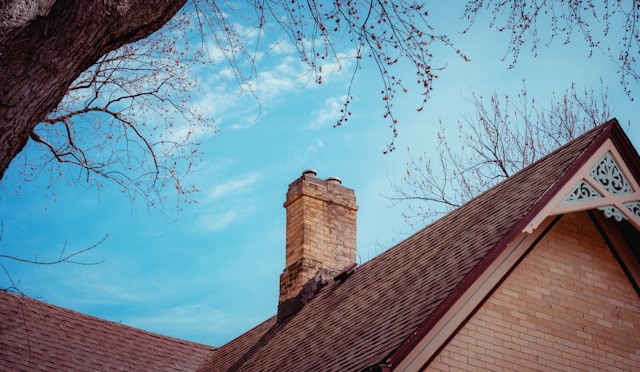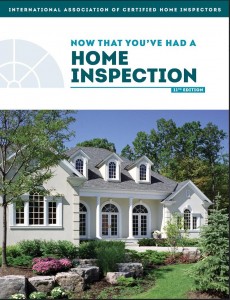Drastic reductions in energy costs can be achieved through very simple changes, most of which homeowners can do themselves.
What Lurks in Your Flue? The Case for Professional Chimney Safety Inspections
June 30, 2025When you look at your chimney flue, you might not see the hidden dangers lurking inside, but they can be deadly. Creosote buildup, a highly flammable residue from burning wood, can lead to chimney fires. Structural damage, such as cracks in the liner or masonry deterioration, can cause the chimney to collapse. Blockages from animal nests, twigs, and leaves can trap toxic gases like carbon monoxide. Professional chimney inspection Atlanta, especially those conducted by certified professionals like those from the Chimney Safety Institute of America (CSIA), are essential for identifying these issues. By understanding what’s hiding in your flue, you can take proactive steps to guarantee your safety and the integrity of your home, and there’s more to learn about how to protect it.

Additionally, inspections detect structural damage like cracks in the chimney liner, masonry deterioration, and obstructions from animal nests or debris, which can cause dangerous backdrafts and carbon monoxide poisoning[1][2][3]. By hiring certified professionals for a chimney safety inspection, you guarantee your home remains safe, efficient, and compliant with safety standards. This proactive measure protects your family and property from serious fire hazards and health risks.
Introduction
Chimney safety is an essential aspect of maintaining a safe and healthy home environment, particularly for those who rely on fireplaces, wood-burning stoves, or other solid fuel-burning appliances. A neglected chimney can turn into a significant fire hazard due to creosote buildup, structural damage, or blockages. Regular chimney inspections, guided by the National Fire Protection Association (NFPA) standards, are important for identifying these risks before they escalate. By undergoing an annual chimney inspection, you confirm that your chimney is free from deposits, structurally sound, and has correct clearances. This proactive measure helps prevent potential fire hazards and carbon monoxide poisoning, safeguarding your family’s well-being and the efficiency of your heating system. Partnering with certified chimney specialists, like those at Greene Home Inspection, guarantees thorough and compliant assessments.
The Anatomy of a Chimney Flue
Understanding the anatomy of a chimney flue is essential for guaranteeing its safe and efficient operation. The flue, often referred to as the flue liner, is a hollow channel that runs down the center of the chimney stack. It is typically made of materials like fired clay tiles, poured refractory cement, or insulated stainless-steel pipes. This liner contains the hot gases and smoke, directing them upward and out of the house. The flue’s smooth interior helps maintain a good air draft, while its durable construction withstands high heat. During a chimney inspection, professionals check the flue for creosote buildup, structural damage, and blockages to guarantee it remains safe and functional, adhering to NFPA standards to prevent potential fire hazards. Regular inspections are important for maintaining the flue’s integrity.
The Dangers Hiding in Your Chimney
As the seasons change and you prepare to use your fireplace or stove, it’s important to be aware of the potential dangers lurking in your chimney. One of the most significant risks is chimney blockage, which can occur due to various obstructions such as twigs, leaves, and animals seeking shelter. These blockages prevent toxic gases, including carbon monoxide, from escaping, posing a severe threat to your health and safety.
Creosote buildup is another essential danger. This highly flammable residue forms from wood fires and can ignite, causing chimney fires that can destroy the flue lining and even your home. Regular inspections and cleaning are imperative to prevent these hazards, ensuring your chimney operates safely and efficiently[3][5]. Professional chimney inspections, guided by NFPA standards, are crucial for identifying and mitigating these risks before they escalate into serious safety issues.
Real Stories: Chimney Fires and Structural Damage
Neglecting chimney maintenance can lead to more than just blockages and creosote buildup; it can result in devastating chimney fires and significant structural damage. For instance, a case study revealed a masonry chimney collapse due to wind, attributed to lack of structural design and poor quality construction. The chimney lacked continuous vertical reinforcement, and a roof cricket was not installed, leading to a weak joint created by metal flashing that penetrated the mortar bed[1].
Such deficiencies can exacerbate the risk of a chimney fire, which can spread quickly and cause extensive damage. Another example shows that what appears to be storm damage can often mask deeper structural issues, such as differential settlement beneath the chimney’s foundation, highlighting the importance of thorough inspections to identify and address these risks before they lead to catastrophic outcomes.
Inspection Standards You Need to Know
When it comes to ensuring the safety and efficiency of your chimney, adhering to the inspection standards set by the National Fire Protection Association (NFPA) is essential. The NFPA defines three levels of chimney inspections, each tailored to different circumstances. A Level 1 inspection is a basic visual examination to check for blockages, creosote, and soot buildup. A Level 2 inspection includes all aspects of a Level 1 inspection but also involves a more detailed examination using video scanners and checks of the roof, attic, crawl spaces, and basements. It is mandatory when buying a new house. A Level 3 inspection, the most detailed, is required if a Level 1 or 2 inspection reveals potential hazards, and it may involve removing parts of the chimney or building structure to access hidden areas.
The Role of Certified Chimney Professionals
How can you guarantee that your chimney inspections are conducted with the highest standards of safety and efficiency? The key lies in hiring certified chimney professionals. Look for those certified by the Chimney Safety Institute of America (CSIA), a nationally recognized institution. CSIA-certified chimney sweeps and inspectors must complete a rigorous training program, including a week-long online review course and passing timed exams based on industry standards such as the International Residential Codebook and the National Fire Protection Association (NFPA) codebook. These professionals must also recertify annually and participate in continuing education to stay updated on the latest safety protocols. Their expertise guarantees that your chimney is inspected thoroughly, identifying potential hazards like creosote buildup, structural damage, or blockages before they become serious fire risks.
Proactive Homeowner Tips
To guarantee your chimney operates safely and efficiently, it’s essential to adopt a proactive maintenance routine. Start by scheduling an annual chimney inspection, ideally before the heating season begins. This inspection will help identify potential hazards such as creosote buildup, damaged flue liners, and blockages before they become serious issues.
Make certain your chimney is free and clear of debris and obstructions. Install a chimney cap to prevent animals and weather-related damage. Use the right fuel for your appliance to minimize creosote formation and maintain peak performance.
Prepare for the inspection by removing any debris or furniture that may block access to the chimney. Address any chimney odors or unusual noises promptly, as these can indicate underlying problems. By taking these proactive steps, you can make certain your chimney remains safe, efficient, and compliant with local building codes.
Greene Home Inspection’s Chimney Safety Services
By adhering to the proactive maintenance tips outlined earlier, you guarantee your chimney is in good condition, but for a detailed assessment, it’s often necessary to engage professionals. Greene Home Inspection, based in the Atlanta area, offers extensive chimney inspection services that guarantee your home remains safe and efficient. Their certified inspectors, in partnership with specialized chimney experts, conduct thorough evaluations guided by NFPA standards. During a chimney inspection in Atlanta, they check for creosote buildup, structural damage, and blockages, identifying potential fire hazards before they escalate. This expertise is particularly valuable during property sales or as you prepare for seasonal heating use, providing you with peace of mind and compliance with safety regulations.
Conclusion
To conclude, guaranteeing your chimney’s safety is not just a matter of routine maintenance, but a critical step in protecting your home and family from potential fire hazards. An annual chimney inspection is essential for identifying hidden issues such as creosote buildup, cracks, and structural damage that can compromise your chimney’s integrity. Professional inspectors, guided by NFPA standards, use specialized tools like cameras and borescopes to conduct thorough inspections, assuring compliance with local building codes and safety standards. By addressing these issues promptly, you not only guarantee your home’s safety but also extend the lifespan of your chimney and maintain its efficiency, ultimately saving you money in the long run.

 An inspection is just the start of keeping your home in good condition. With each inspection we offer a free book filled with home maintenance tips and other valuable information. Please
An inspection is just the start of keeping your home in good condition. With each inspection we offer a free book filled with home maintenance tips and other valuable information. Please